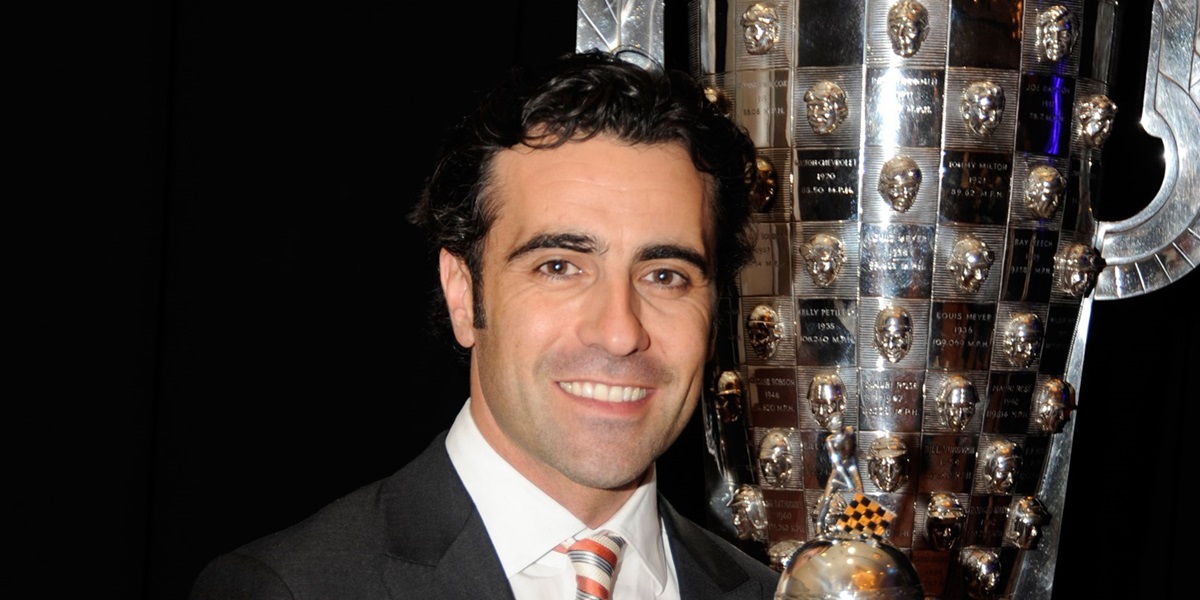
'Baby Borg' Trophy 'Means The Most,' Franchitti Says
January 17, 2013 | By Dave Lewandowski - INDYCAR.com
There’s the big check, of course, and a replica of the Pace Car to complement accolades for the winner of the Indianapolis 500. This past May, Dario Franchitti also received “a belt buckle the size of a dinner plate, which I’ve actually worn” and a “golden rifle. Seriously.”
But to receive the BorgWarner Championship Driver’s Trophy “means the most to all the drivers,” Franchitti said after being presented his third “Baby Borg” by BorgWarner chairman and CEO Timothy Manganello during the annual dinner in conjunction with the Automotive News World Congress.
“You always look forward (to the next race in a few days) unfortunately and when the season’s over then you might think about (the Indy win) a little, but it’s things like tonight that allow you to really enjoy it,” Franchitti said. “This one might go in my office in Scotland; none are there yet. I have my first-ever go-kart trophy; that’s the only one there.”
Click it: Dario Franchitti's Indianapolis 500 stats
BorgWarner established the driver’s trophy in 1988 to provide the previous 500 Mile Race champion with a personal keepsake of the Speedway victory. Rick Mears, who won his third of four Indy 500 victories the previous May, was the first recipient. Previously, the winner received a wooden plaque with a silhouette of the Borg-Warner Trophy as a memento.
In 1998, the company established the BorgWarner Championship Team Owner’s Trophy. Like the driver’s trophy, the team owner’s trophy is a replica of the Borg-Warner Trophy but features a band of art deco racing cars accented in gold to symbolize the importance of teamwork in the automotive business.
Target Chip Ganassi Racing owner Chip Ganassi about collecting his fifth trophy.
“Coming on stage to pick this trophy up never gets old,” he said. “I want to thank the Indianapolis Motor Speedway for putting on one of the finest sporting events in the world, and we’re lucky to have that as a backdrop. I’m the luckiest man in the world to be involved in this sport and my calendar is open to be invited to this dinner next year.”
Franchitti also won the 500 Mile Race in 2007 (with then-Andretti Green Racing) and 2010 with Target Chip Ganassi Racing. Despite having what he termed a terrible qualifying effort (16th), Franchitti climbed into contention late in the No. 50 Honda-powered car and battled teammate Scott Dixon and Takuma Sato for the victory through the first turn of the final lap.
“I have to thank Chip Ganassi and the whole Target team. It’s an organization that from the bottom to the top has that will to win every day, which is really handy when you’re getting up in racing driving years like me,” he said.
Franchitti also called out BorgWarner, whose single (Honda) and twin (Chevrolet) engineered-for-racing turbochargers were part of the new 2.2-liter V-6 engine packages for 2012.
“All season the pace of development in power, in reliability and fuel consumption was something special,” Franchitti said of the first season of engine manufacturer competition since 2005. “I’m excited to see as the years go on those developments trickle down to the (passenger) cars. BorgWarner has a much bigger role now and it’s great to see their expanded role in IndyCar racing and showcase their technology.”
The Baby Borg is 14 inches tall and sits on a beveled black marble base that includes a hand-crafted three-dimensional sterling silver image of the winning driver’s face (a duplicate of the image affixed to the full-sized Borg-Warner Trophy).
The history of the Borg-Warner Trophy is as rich as the men whose bas-relief portraits are affixed to its sterling-silver body.
In 1935, the Borg-Warner Automotive Company (now called BorgWarner) commissioned designer Robert J. Hill and Spaulding-Gorham, Inc., of Chicago, to create the trophy at a cost of $10,000.
Unveiled at a 1936 dinner hosted by then-Speedway owner Eddie Rickenbacker, the Borg-Warner Trophy was officially declared the annual prize for Indianapolis 500 victors. It was first presented that same year to champion Louis Meyer, who remarked, “Winning the Borg-Warner Trophy is like winning an Olympic medal.”
Franchitti's portrait is the 99th added to the Borg-Warner Trophy, the annual prize for Indianapolis 500 winners. Each of the 98 winning drivers of the race is featured, including victorious co-drivers L.L. Corum and Joe Boyer in 1924 and Floyd Davis and Mauri Rose in 1941. A 24-karat gold likeness of late Speedway owner and President Anton "Tony" Hulman Jr. also is affixed on the trophy in tribute to his rejuvenation of the track and the Indianapolis 500 after World War II.
Including Franchitti, only 10 drivers appear three or more times on the trophy -- A.J. Foyt (1961, '64, '67 & '77), Al Unser (1970, '71, '78 and '87), Mears (1979, '84, '88 and '91), Louis Meyer (1928, '33 and '36), Wilbur Shaw (1937, '39 and '40), Mauri Rose (1941, '47 and '48), Bobby Unser (1968, '75 and '81), Johnny Rutherford (1974, '76 and '80) and Helio Castroneves (2001, '02 and '09).
The iconic 5-foot-5 trophy, which is on permanent display at the Indianapolis Hall of Fame Museum, also is engaged for special events such as the North American International Auto Show this week in Detroit.